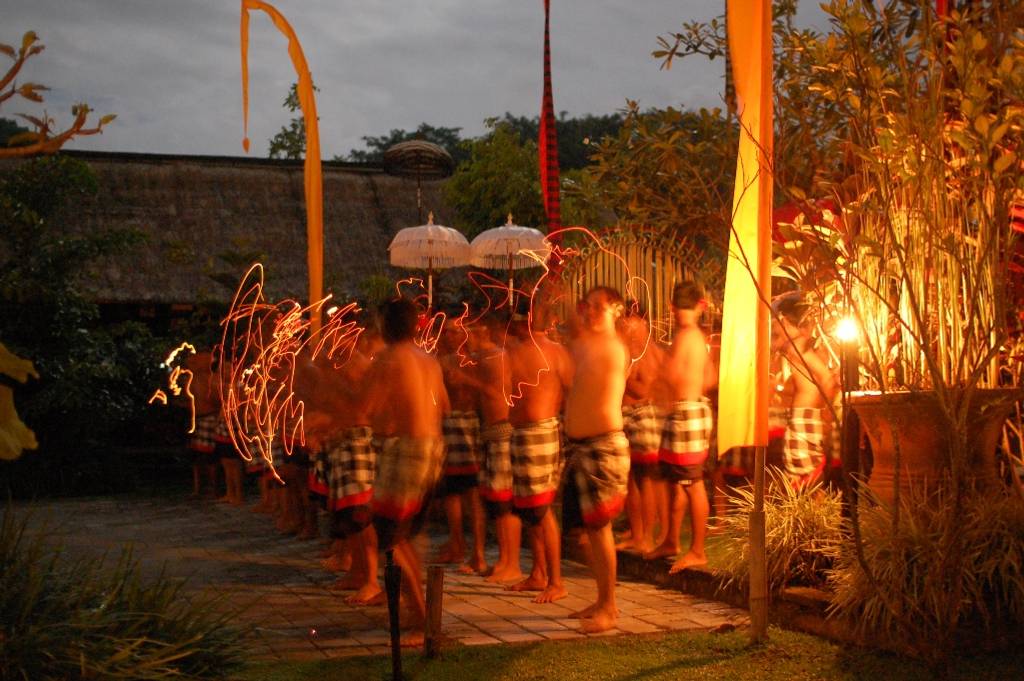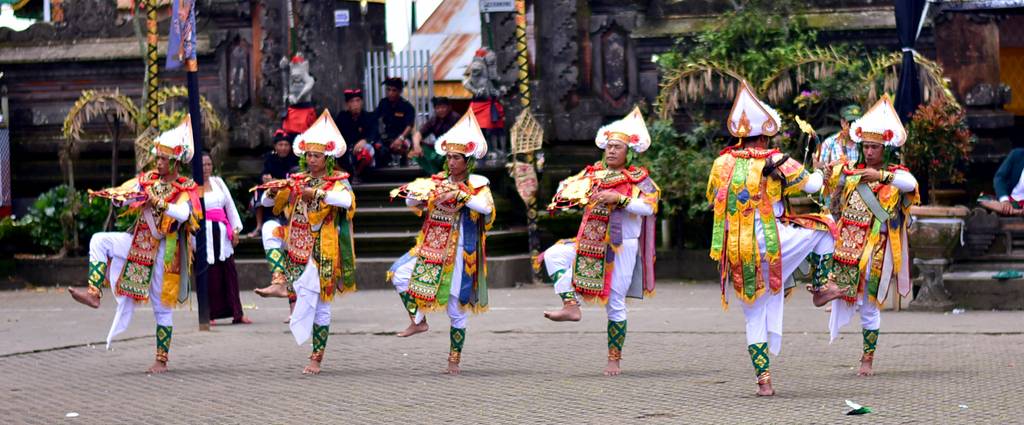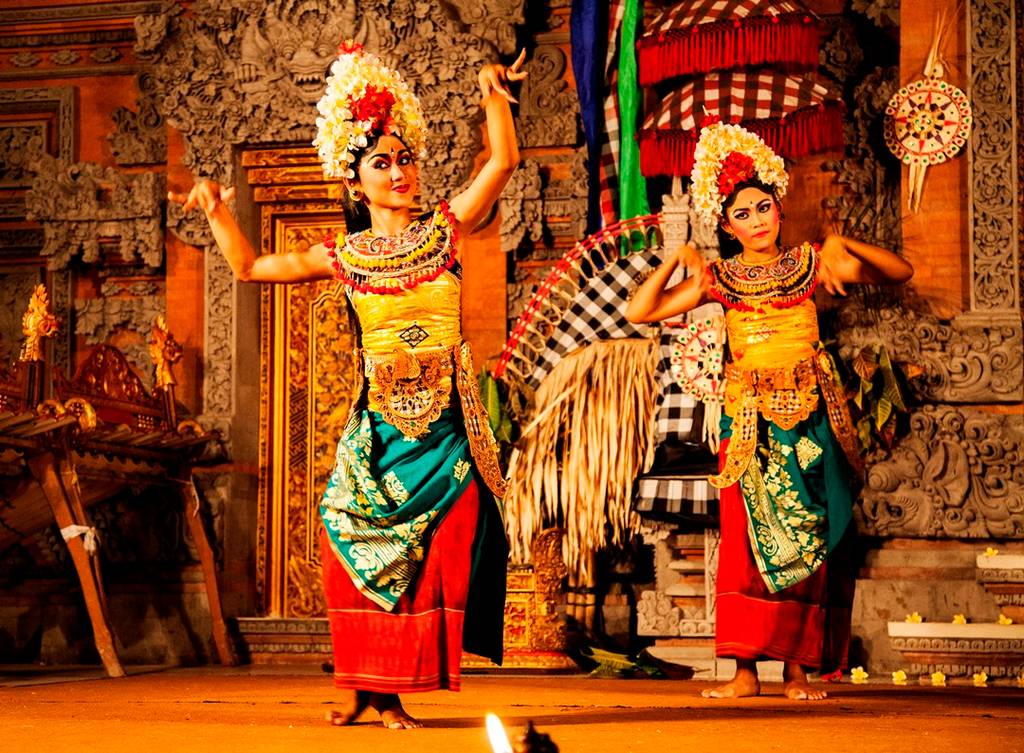No trip to Bali is complete without watching at least one Balinese dance, but did you know they have several different types? It is not widely known that not all Balinese dances are meant for entertainment; in fact, some dances in Bali are not performed to tourists as they are purely used as part of prayers or rituals. Before you go to Bali, it’s good to know about the different types, at least to know which ones to add to your itinerary so you can dance your way through your trip informed and inspired by this unique performance art.

1. Barong Dance
The Barong dance, besides the Kecak dance, is arguably the most popular form of dance recommended to tourists. This dance and drama art form in Bali portrays the story of Barong, a force of good, and Rangda, the force of evil, as they engage in the battle of good and evil. As with most stories that involve good and evil, Barong always wins in the end. Traditionally, this form of dance was performed when Balinese people believed there is a disruption in the balance of good and evil which led to a disease epidemic. This dance is said to symbolically signify the balance returning, in hopes that it translates into the banishment of the epidemic.

2. Kecak Dance
The Kecak is another dance and drama in Bali that is often recommended to tourists. The most well-known spot to watch this dance is Uluwatu Temple. During the Kecak dance, a group of male dancers (though now there are female groups as well) do the Ramayana monkey chant, which involves moving their hands and arms while chanting the word “chak”. The dance was originally meant to help people go into a trance in order to carry out exorcisms. The movements depict the bravery of the Vanaras, a group of monkey soldiers led by Hanuman, who helped Lord Rama defeat Ravana in the Ramayana.

3. Topeng Dance
The topeng dance is also a dance and drama that is popular not only in Bali but in other parts of Indonesia as well. It’s not particularly a spiritual dance, but it features masked dancers who act out stories about the contradictory nature of humanity, all while accompanied by the gamelan. The stories may feature fabled kings, popular heroes, ancient myths, and more, and thus the storyline can be completely different from dance to dance. It’s a Balinese dance worth watching to try and interpret the interesting stories being portrayed, and perhaps even trigger a reflective mood. Don’t worry though, there often also tends to be comedic elements in the performance to lighten the spirit.

4. Baris Dance
Compared to the Topeng dance, the Baris dance is more spiritual in nature and is often performed before or after prayer and funeral rituals, depending on the type of dance. In this inspiring Balinese dance, which can be a solo or group dance, the dancer or dancers use movement and expression to show the journey of a young soldier getting comfortable with his masculinity and eventually coming out as a commanding presence. The dance is often accompanied by gamelan, and for budding Balinese male dancers, this is often the first dance they learn to master for solo dance.

5. Legong Dance
The Legong Bali dance is typically performed by female dancers, though nowadays men may perform it in women’s costumes. It is said this dance came about when an ancient prince fell ill and dreamed about this dance being performed by two maidens. He then arranged for the dance to be performed and it has stayed as an art form ever since. The Legong dance is an entrancing dance to watch, as it has complex footwork, delicate finger movements, and fixating facial expressions. As with most Balinese dances, the dance itself tells a story; in this case, a story of a princess who is kidnapped by a bad man and how subsequently, the villain gets his just desserts.

6. Wayang Wong Dance
The Wayang Wong dance and drama in Bali has its roots in Javanese tradition, but the Balinese have also adapted it to their own culture. This theatrical performance showcases stories from the Hindu epic Ramayana, and in the more modern version, sometimes includes the Kecak dance as part of the performance. It is a spectacle of costumes, drama, music, and more, but at the same time, is considered a semi-sacred dance.
There are dozens of other forms of dance in Bali too, and if you were to watch all of them, it would require you to temporarily stay in Bali for a few months. It’s still worth it to try your best and see some of the main forms mentioned above if you are a cultural enthusiast looking for new experiences to be culturally fulfilled and inspired by. The good news is, Club Med Bali does offer excursions to see several of the above dances if you stay with us. Just inquire during your booking, or speak to any of our friendly G.Os!


